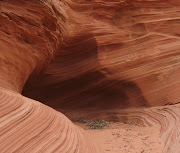

(Photos Reuters Mendivil)
 Automatically, Egypt takes pride of place when mummy find announcements are made. But Peru is unraveling the conventional wisdom with the news that archaeologists in the middle of the capital city of Lima, have unearthed a 1300 year old lady mummy. Unraveling the intricacies of the pre-Columbian Wari culture uses these burial rituals will consume anthropologists for years. What stays consistent through the years are the human scavengers through out history that rob the tombs. sometimes its the professionals that consider them a find and put the treasures on display for all to see and marvel over. What makes a bit of difference is the intent on opening the grave and the permissions granted. There is a reason 1925 discovery began the great King Tut curse affecting prominent curators and explorers alike after seeing the sarcophagus. The blue eyes in this map mock up are rather creepy but the 1300 year old mask had them pinned on, leading the archaeologists to name her The Lady of the Mask.
Automatically, Egypt takes pride of place when mummy find announcements are made. But Peru is unraveling the conventional wisdom with the news that archaeologists in the middle of the capital city of Lima, have unearthed a 1300 year old lady mummy. Unraveling the intricacies of the pre-Columbian Wari culture uses these burial rituals will consume anthropologists for years. What stays consistent through the years are the human scavengers through out history that rob the tombs. sometimes its the professionals that consider them a find and put the treasures on display for all to see and marvel over. What makes a bit of difference is the intent on opening the grave and the permissions granted. There is a reason 1925 discovery began the great King Tut curse affecting prominent curators and explorers alike after seeing the sarcophagus. The blue eyes in this map mock up are rather creepy but the 1300 year old mask had them pinned on, leading the archaeologists to name her The Lady of the Mask. The woman was from the Wari culture, said archaeologist Isabel Flores, who heads work at the Huaca Pucllana, a mud-brick complex several blocks large located in the Miraflores district of Lima.
The woman was from the Wari culture, said archaeologist Isabel Flores, who heads work at the Huaca Pucllana, a mud-brick complex several blocks large located in the Miraflores district of Lima.
"It is an important find, because we have found over the years several tombs that have been looted, but never one that was intact," Flores told AFP on Tuesday.
"It is a woman because in the surrounding area we found offerings and textile items like those of a (female) weaver," Flores said. The archaeologists also found ceramics and the remains of children who were offered as sacrifices to accompany the dead person in the afterlife.The Wari robe found has an intriguing pattern design on it. More interesting, is that the accomplished road building culture came before the Incas. This find may yield insights for years to come.
The Lima grave had three mummified
 adults, but its clear that the lone child found was part of the common ritual sacrifice of the Wari culture to the sea and their land. Peru is also finding more cultural treasures and artifacts in the Andean highlands making a strong case for placement in the pantheon of cradle of civilization titleholders.
adults, but its clear that the lone child found was part of the common ritual sacrifice of the Wari culture to the sea and their land. Peru is also finding more cultural treasures and artifacts in the Andean highlands making a strong case for placement in the pantheon of cradle of civilization titleholders.In Egypt, finds in King Tut's tomb bring questions such as paternity of the 2 fetuses found in a box, nowadays they would be called preemies, or why were the girls were inside Tut's tomb the first place from a cultural standpoint.
Then, there is the German couple, Helmut and Erika Simon who in 1991, climbed Simulaun Glacier in Italy when much to their surprise, discovered a body
 on ice. Shock set in when the classification of the remains are
on ice. Shock set in when the classification of the remains are carbon pinpointed as prehistoric. The Italian city government of Bolzano sponsored the gingerly intricate removal of the Mummy, authenticates it with national resources, takes possession of it, releases pictures of the mummy, makes it available for public tours, earns millions of euros over time, but gave a chintzy offer to the couple of 5000 euros for their trouble. Both nations laid claim to The Iceman. Finally, German couple sued Italy fourteen years ago and are just now coming to a settlement after a chintzy offer by the Italians. What is it with Italy demanding their stuff, like art works, but not giving rights to others for making a discovery or keeping ancient treasures they officially looted in the name of fascism? (Photos EPA)
carbon pinpointed as prehistoric. The Italian city government of Bolzano sponsored the gingerly intricate removal of the Mummy, authenticates it with national resources, takes possession of it, releases pictures of the mummy, makes it available for public tours, earns millions of euros over time, but gave a chintzy offer to the couple of 5000 euros for their trouble. Both nations laid claim to The Iceman. Finally, German couple sued Italy fourteen years ago and are just now coming to a settlement after a chintzy offer by the Italians. What is it with Italy demanding their stuff, like art works, but not giving rights to others for making a discovery or keeping ancient treasures they officially looted in the name of fascism? (Photos EPA)For years, Bolzano's provincial administration have been offering the Simons 50,000 euros.More interesting, The Iceman is now said to be cursed after seven people mysteriously died under curious circumstances. Helmut Simon died in a mountaineering accident in 2004.In spurning the fee, the Simons cited the estimated four million euros a year the Iceman generates for restaurants, hotels and souvenir-sellers in Bolzano alone - not to mention a worldwide industry of TV programmes, documentaries and books.
They filed suit to establish who found the prehistoric hunter and who should get the proper reward.
Italian law lays down a finder's fee of 25% of a discovery's value.
 Filmmaker turned author Hugh Thomson, spent years trekking across Peru, yet touches the spirit that the key to understanding country is to acquire knowledge of it ancients roots. As a testament to that he brings his love of lore and his historical wanderings to paper in A Sacred Landscape: The Search for Ancient Peru. I'll say it again one of the best books to be found on pre-Columbian history is 1491 from Charles Mann. It is a must have for any well stocked library.
Filmmaker turned author Hugh Thomson, spent years trekking across Peru, yet touches the spirit that the key to understanding country is to acquire knowledge of it ancients roots. As a testament to that he brings his love of lore and his historical wanderings to paper in A Sacred Landscape: The Search for Ancient Peru. I'll say it again one of the best books to be found on pre-Columbian history is 1491 from Charles Mann. It is a must have for any well stocked library.









No comments:
Post a Comment